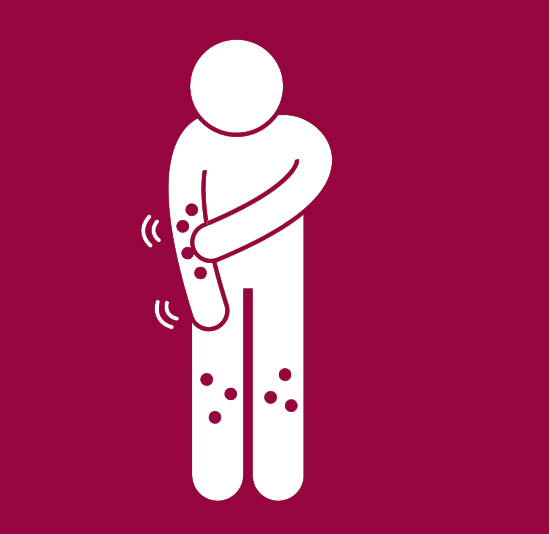You are here
Vitiligo (skin pigmentation)
Vitiligo is a skin condition characterised by chalky white patches of skin surrounded by a dark border. These white patches appear because the cells that normally produce the skin pigment melanin that gives the skin its colour and protect it from the sun´s UV rays are absent.
Should I be worried about Vitiligo ?
Vitiligo itself is not a threat to health, but it has been linked to other diseases, including Addison’s disease, pernicious anemia and alopecia (patches of hair loss).
Why do I have vitiligo?
The causes of vitiligo are yet to be established, but it can run in families and most of the research so far points to an autoimmune disease in which the person’s immune system becomes too active and destroys the skin cells that produce colour (melanocytes). A thyroid gland malfunction may be involved as well.
Vitiligo can also occur after a physical trauma to the skin. Chemical agents may be involved in the development of this condition. Physical and emotional stress may also aggravate vitiligo. The unpigmented spots are highly vulnerable to sunburn.
How is Vitiligo Treated?
There are a number of remedies to decrease the visibility of Vitiligo on the affected areas of the skin. These include exposing the affected skin with UVB lamps at home or UVA treatments within a hospital setting. Cosmetic creams can also help camouflage the patches. Corticosteroids are also used, but these often have side effects (such as skin shrinkage and streaks on your skin)
How can Foodwise help?
Is skin depigmentation an issue for you? Foodwise can help.
UV lamps and camouflage creams are not your only options.
We have all the nutritional information and dietary advice to help improve the symptoms of vitiligo from the inside out.
Join nowHow does healthy nutrition help treat Vitiligo and depigmentation naturally?
Vitiligo is a disease that can be embarrassing and difficult to treat. Your doctor may recommend traditional therapies, although nutritional deficiencies may contribute to the condition.
Conventional advice suggests that changing the food you eat is not going to cure vitiligo. However, since vitiligo is thought to be an autoimmune illness, it makes sense to focus on natural ways to prevent and reverse the root causes of autoimmune illness, which means following a diet and lifestyle that minimize the inflammation that characterizes the loss of skin color in people with vitiligo.
These dietary and lifestyle measures include:
- eating a plant-centered diet (the bulk of your food choices should be vegetables, fruits, legumes, and whole grains that your body doesn't have trouble digesting)
- ensuring adequate nutrient intake (especially omega 3, vitamin B12 and vitamin D)
- avoiding meat and dairy products
- managing stress
- getting plenty of good quality sleep...
...as well as the appropriate use of natural supplements and home remedies.

